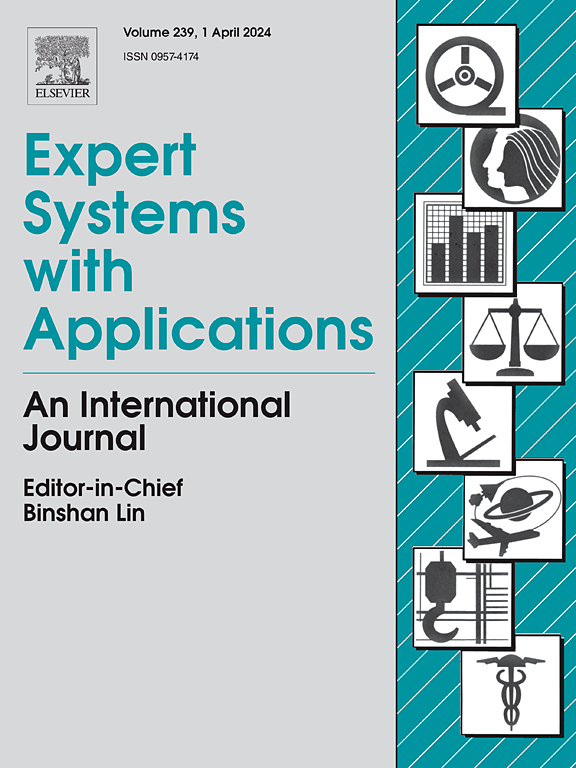极端供需水风险下水氮协同管理的智能不确定优化框架
IF 7.5
1区 计算机科学
Q1 COMPUTER SCIENCE, ARTIFICIAL INTELLIGENCE
引用次数: 0
摘要
由于全球变暖,干旱和洪水等极端气候条件变得更加频繁、持续和严重。多情景水氮资源分配计划(WNRAP)不仅解决了极端气候条件下与水供需不确定性相关的风险,还通过减少碳排放来降低这些极端事件发生的可能性。因此,为了提高农业水氮管理系统(AWNMS)应对极端水文事件的能力,建立了一个结合R-vine copula和区间两阶段随机规划(RITSP-IGWO)智能优化框架的多维不确定性模型。首先,使用R-vine copula模型来表征降雨、径流和作物实际蒸散之间的非高斯相关性(ETc,act)。其次,采用区间两阶段随机规划(ITSP)模型求解环境参数中的不确定性。最后,利用多策略改进灰狼优化(IGWO)算法对ITSP模型进行求解,得到27种场景下的WNRAP结果。优化结果表明,WNRAP的水肥和氮肥利用效率分别提高了18.69%和21.83%,CO2排放量降低了11.63%,溶液效率提高了67.99%。该框架可以生成准确、稳健的wnrap,为可持续农业应对极端气候不确定性风险提供有效的理论支持和实践指导。本文章由计算机程序翻译,如有差异,请以英文原文为准。
An intelligent and uncertain optimization framework for water-nitrogen synergistic management under extreme supply and demand water risks
Extreme climate conditions, such as droughts and floods, are becoming more frequent, prolonged, and severe due to global warming. The multiscenario water–nitrogen resource allocation program (WNRAP) not only addresses the risks associated with uncertainty in water supply and demand in extreme climates but also reduces the likelihood of these extreme events by decreasing carbon emissions. Therefore, to increase the ability of agricultural water–nitrogen management systems (AWNMS) to cope with extreme hydrological events, a multidimensional uncertainty model combined with an intelligent optimization framework that integrates the R-vine copula and interval two-stage stochastic programming (RITSP-IGWO) was developed. First, the R-vine copula model was used to characterize the non-Gaussian correlations among rainfall, runoff, and crop actual evapotranspiration (ETc,act). Second, the interval two-stage stochastic programming (ITSP) model was employed to address uncertainties in the environmental parameters. Finally, the multistrategy improved gray wolf optimization (IGWO) algorithm was utilized to solve the ITSP model and obtain the WNRAP results for 27 scenarios. The optimization results revealed that the water and nitrogen fertilizer use efficiencies in the WNRAP increased by 18.69% and 21.83%, respectively, whereas the CO2 emissions decreased by 11.63%, and the solution efficiency improved by 67.99%. This framework can generate accurate and robust WNRAPs, providing effective theoretical support and practical guidance for sustainable agriculture to address the risks of extreme climate uncertainty.
求助全文
通过发布文献求助,成功后即可免费获取论文全文。
去求助
来源期刊

Expert Systems with Applications
工程技术-工程:电子与电气
CiteScore
13.80
自引率
10.60%
发文量
2045
审稿时长
8.7 months
期刊介绍:
Expert Systems With Applications is an international journal dedicated to the exchange of information on expert and intelligent systems used globally in industry, government, and universities. The journal emphasizes original papers covering the design, development, testing, implementation, and management of these systems, offering practical guidelines. It spans various sectors such as finance, engineering, marketing, law, project management, information management, medicine, and more. The journal also welcomes papers on multi-agent systems, knowledge management, neural networks, knowledge discovery, data mining, and other related areas, excluding applications to military/defense systems.
 求助内容:
求助内容: 应助结果提醒方式:
应助结果提醒方式:


